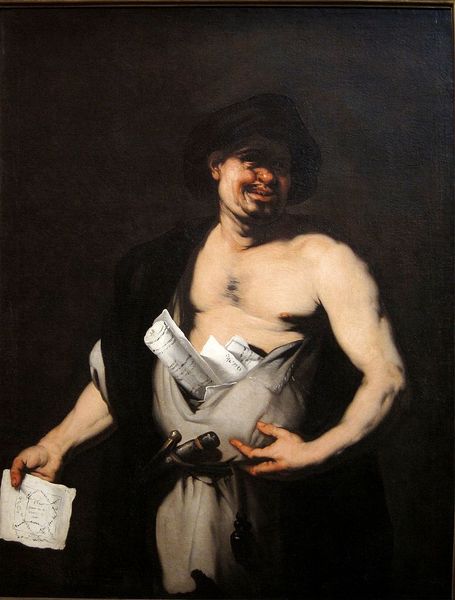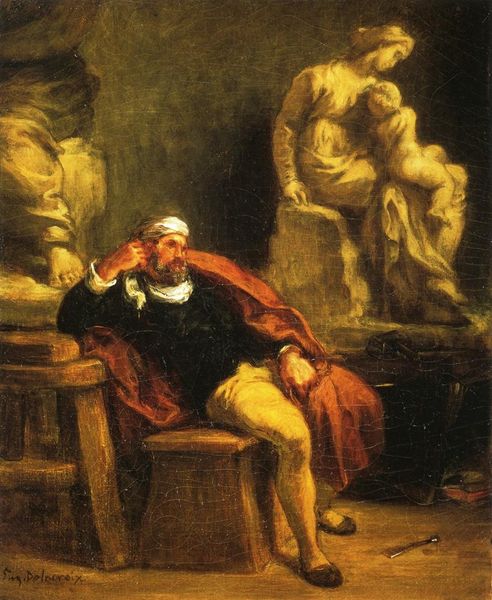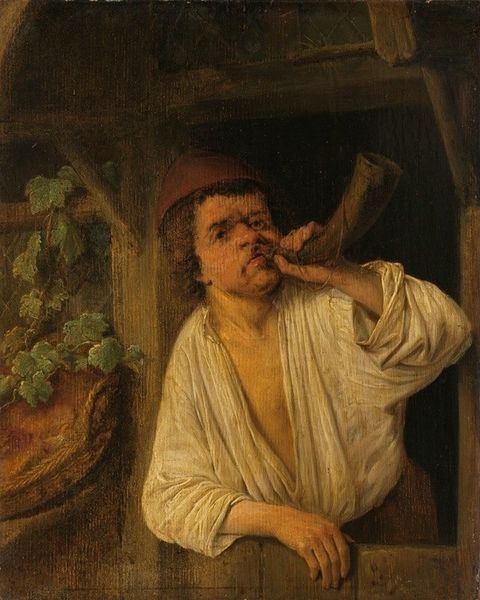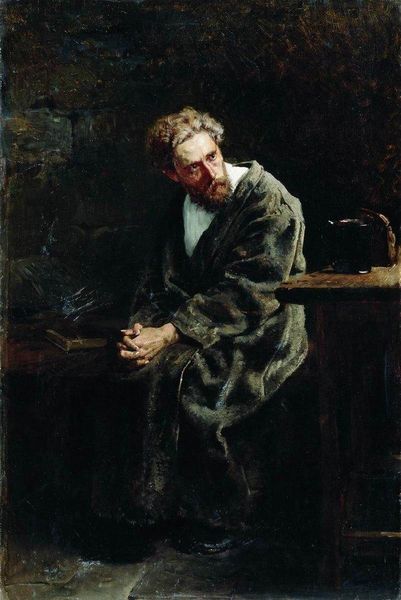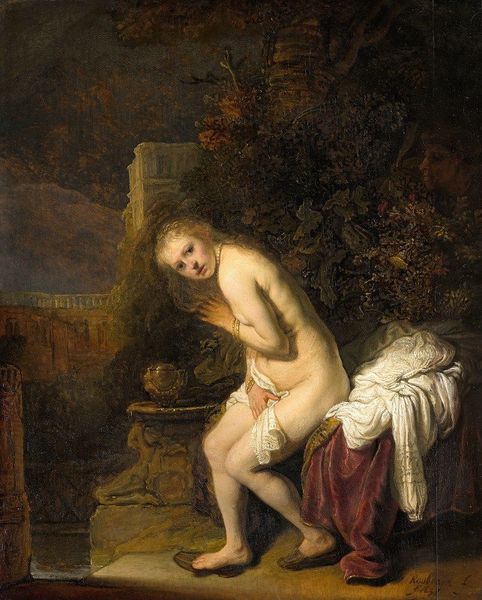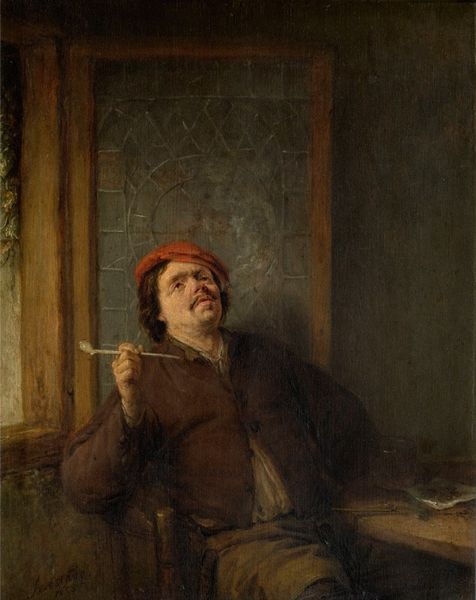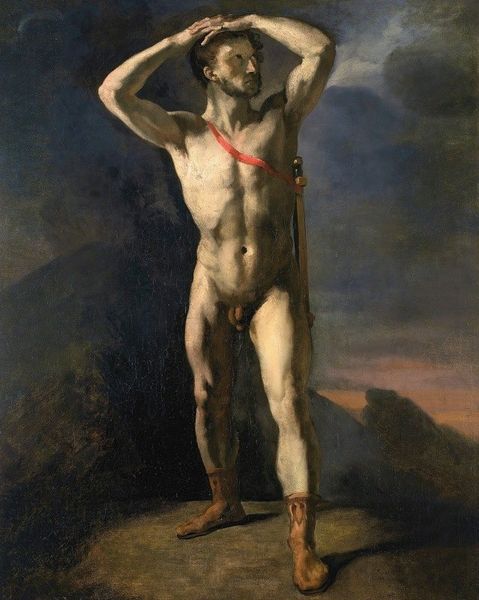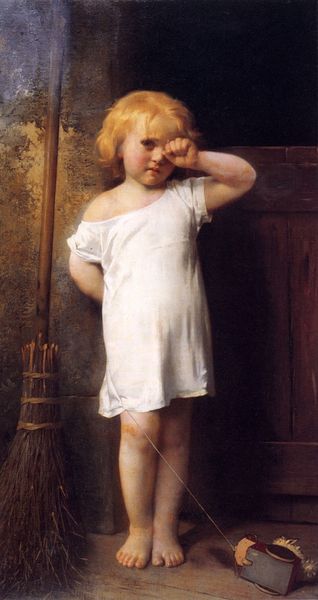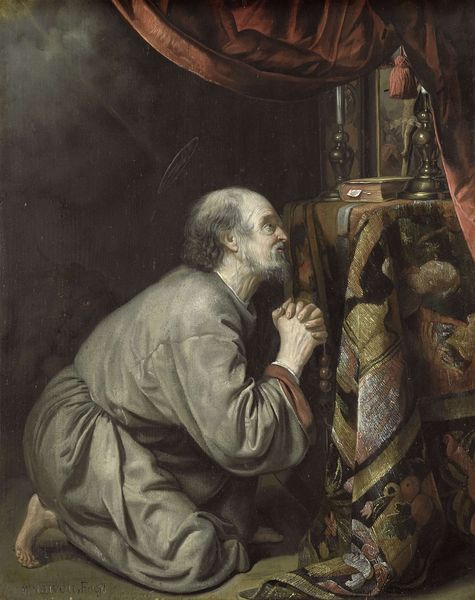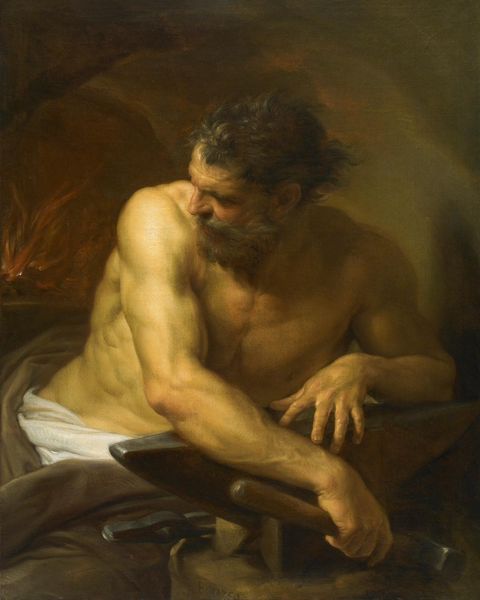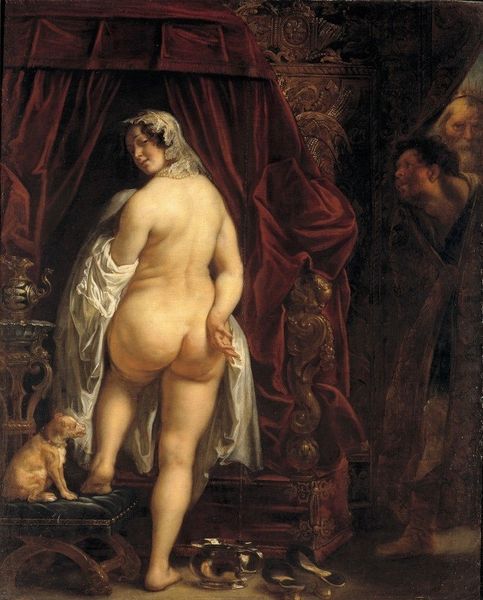
oil-paint
#
portrait
#
baroque
#
oil-paint
#
figuration
#
oil painting
#
genre-painting
#
nude
Copyright: Public domain
Curator: Here we have Rembrandt van Rijn's "Hendrickje Bathing in a River," painted around 1654. It currently resides in the National Gallery, London. Editor: My first impression is one of intimate observation. The contrast between the woman's luminous skin and the deep, almost murky backdrop immediately draws you in. Curator: Indeed. Rembrandt's choice to depict Hendrickje Stoffels, his domestic partner, in such an everyday act as bathing speaks volumes. Unlike idealized nudes of mythological figures, this work portrays a real woman in a vulnerable and human state. This marked a departure from traditional subject matter. Editor: From a formal perspective, the impasto technique, the thick application of paint, gives texture and a certain roughness to the surface. The lighting, of course, is classic Rembrandt – that chiaroscuro effect that models the form so dramatically. I think the white of her shirt, the gilded fabric she’s holding create the highlights which are critical to direct the eye. Curator: And that "Rembrandt lighting" isn't accidental. It elevates an ordinary domestic scene. The artist plays with light and shadow to suggest both physical and psychological depth. There's a palpable sense of empathy here, and his portrayal resists the objectification so common in much of art history. Editor: While I agree about Rembrandt's sensitive touch, I am also thinking about how this intimacy has been presented. Is the woman caught off guard or is this rather an erotic pose in which the private female body is put on display, playing to some idea of masculine pleasure or gaze? Curator: These questions regarding the objectification of women are extremely relevant to contemporary interpretation, and of course we bring our late modern understanding of those power dynamics to our appreciation of earlier art. At the time this piece was made, paintings such as this allowed private displays of power. It also made commentaries on a lifestyle that only very wealthy people would be able to practice at that time. Editor: Ultimately, I find it beautiful to see the Baroque style expressed this way in the quiet details of this painting; in the woman’s soft expression and that glimpse of reality from almost four hundred years ago. Curator: The historical value lies, for me, in its break with artistic conventions and for providing such direct commentary of seventeenth century life.
Comments
artera almost 2 years ago
⋮
Rembrandt van Rijn (1606-69), soaked up influences from the Italian Baroque through Dutch followers of Caravaggio. Revered for his portraits and self-portraits, not to mention biblical paintings and prints, his prodigious output required a large number of apprentices and paying students. Rembrandt painted this small oak panel in the year that his housekeeper Hendrickie Stoffels became his mistress, seven years after the death of his wife Saskia. Although Rembrandt continued to paint biblical themes, the title does not suggest a particular subject such as Susanna or Bathsheba, both of which are associated with bathing. The warmth and intimacy suggests that Hendrickje was the model. She is totally absorbed in the sensation of cold water on her legs and feet and is completely oblivious of the viewer
Join the conversation
Join millions of artists and users on Artera today and experience the ultimate creative platform.

